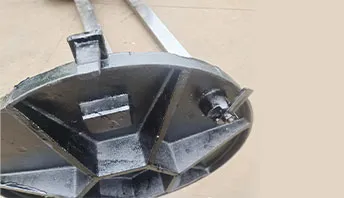welded wire mesh size
Understanding Welded Wire Mesh Sizes
Welded wire mesh is a versatile and widely used material in various construction and manufacturing applications. It consists of a network of wires welded together at their intersections, providing a robust structure with high tensile strength. One of the most crucial aspects of welded wire mesh is its size, which can significantly impact its performance and suitability for specific projects. In this article, we'll explore the importance of welded wire mesh sizes, the factors that influence them, and the common applications for different sizes.
What is Welded Wire Mesh?
Welded wire mesh is made from stainless steel or low carbon steel wires that are welded at regular intervals to form a grid. The size of the mesh refers to the distance between the wires, measured in both the diameter of the wires and the spacing between them. Typically, the wire diameter can range from 1.5 mm to 5 mm, while the spacing can vary from 25 mm to 200 mm.
Importance of Size in Welded Wire Mesh
The size of welded wire mesh is critical for several reasons. Firstly, it affects the strength and durability of the mesh. Thicker wires and closer spacing create a more robust mesh that can withstand heavy loads and extreme conditions. On the other hand, thinner wires with wider spacing may be suitable for lighter applications.
Additionally, the size of the mesh plays a vital role in determining its usability in different settings. For instance, a smaller mesh size is ideal for projects that require fine filtration, such as road construction or plastering, where smaller aggregates must be held in place. Conversely, larger mesh sizes are often used in applications like fencing, where visibility and light penetration are desired.
welded wire mesh size

Common Applications Based on Size
1. Construction In construction, welded wire mesh is widely utilized in concrete reinforcement. Here, sizes typically range from 100 mm x 100 mm to 200 mm x 200 mm. The thicker the wire, the more load it can bear, making it suitable for slabs, beams, and columns.
2. Fencing For fencing applications, sizes often vary. A mesh size of around 50 mm x 50 mm is commonly used for livestock fencing, while larger sizes may be applied for garden fences. This allows for adequate security while maintaining visibility.
3. Industrial In the industrial sector, welded wire mesh is employed in the creation of cages or enclosures for storage and equipment. These applications usually require thicker wires with smaller spacing to enhance safety and containment.
4. Filtration For filtration applications, such as industrial sieves or in food production, welded wire mesh with finer spacing is essential. Typical sizes in these cases might be around 5 mm x 5 mm or smaller to effectively filter out particulates.
Conclusion
Choosing the right welded wire mesh size is crucial for ensuring the success of any project. Whether for residential, commercial, or industrial use, understanding the implications of size on both strength and functionality helps in selecting the perfect mesh for specific applications. As the demand for reliable and effective solutions continues to grow, welded wire mesh remains a staple in construction and various industries, proving its value time and again. Always consult with professionals when determining the appropriate size and specifications for your project needs, ensuring optimal results and safety in all applications.
-
Space-Saving Chain Fence Hacks Vertical Gardening with Cyclone MeshNewsJul.16,2025
-
Innovations in Iron Nail Wire Production for Modern ConstructionNewsJul.16,2025
-
Creative Uses of Wire Netting Fence in Modern Landscape DesignNewsJul.16,2025
-
Barbed Wire Fence Innovations in Anti-Climb TechnologyNewsJul.16,2025
-
Architectural Uses of Umbrella Nails for Aesthetic Roof DesignsNewsJul.16,2025
-
Architectural Uses of Razor Barbed Wire in Secure Urban DesignNewsJul.16,2025




